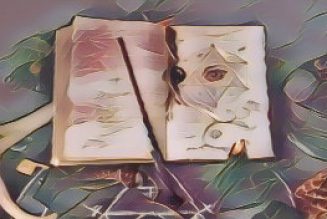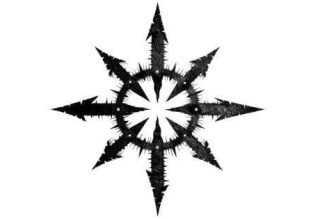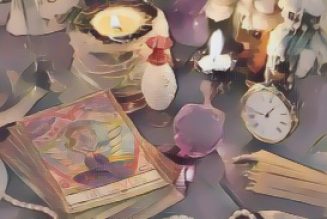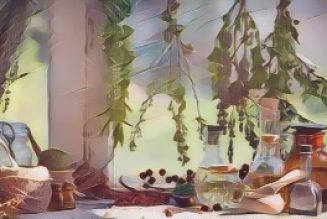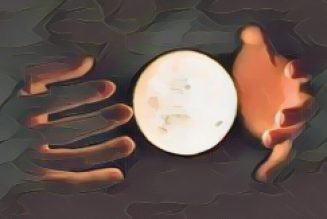Blood has been associated with a significant and multifaceted role in witchcraft, both in historical contexts and in present-day practices. It is often viewed as a symbol of life, sacrifice, and a connection to spiritual realms, and has been incorporated into magical practices across various cultures and time periods.
Some practitioners use their own blood in rituals, considering it a means to channel personal energy and intent. This may involve pricking a finger or using a sterile lancet to obtain a small amount of blood, which can then be added to objects such as candles, sigils, or written petitions. The process is generally approached with attention to consent and safety.
In certain historical and traditional forms of witchcraft, animal blood has been used as an offering or ritual ingredient. For instance, ancient Greek and Roman practices included animal sacrifice to honor deities. In medieval European folklore, blood from animals like chickens or goats was sometimes used in spells for protection or cursing. In contemporary contexts, animal sacrifice is a subject of ethical debate, and many modern practitioners choose non-violent alternatives, reflecting changing values within the community.
Menstrual blood is regarded in some traditions as having unique magical properties. Historically, it has been linked to fertility, lunar cycles, and concepts of feminine power. Some practitioners use menstrual blood in spells for love, protection, or healing, attributing to it qualities of intuition and creative force. Practices may include anointing talismans or adding menstrual blood to ritual baths. The use of menstrual blood is sometimes described as a way to acknowledge bodily autonomy and natural cycles.
Blood pacts, or oaths sealed with blood, have appeared in various magical and folkloric traditions. These agreements are believed by some to create a strong bond through the mingling of blood, and may be used to formalize coven membership or alliances. Such commitments are often considered serious, with some traditions attributing spiritual consequences to breaking a blood oath.
In some cultures, blood offerings—often from animals—are made to deities, spirits, or ancestors as a means of seeking favor, protection, or assistance. For example, certain African Traditional Religions and Afro-Caribbean practices include animal sacrifice as a way to communicate with the spirit world or express gratitude. These rituals are typically performed with specific protocols intended to honor both spirits and animals.
In European witchcraft history, blood has been linked to sacrifice and the enhancement of magical power. During the witch hunts of the 15th to 17th centuries, accusations of blood rituals contributed to fear and persecution, with claims that witches used blood in spells or to summon supernatural entities. Some historical texts and folk traditions describe the use of blood in creating protective amulets or in cursing.
Afro-Caribbean religions such as Santería, Vodou, and Palo Mayombe include blood in rituals, often through animal sacrifice. In these traditions, blood is considered an offering that nourishes spirits and facilitates communication between the physical and spiritual worlds. The practice is rooted in African beliefs and is typically carried out with ritual precision.
Many Indigenous cultures have distinct beliefs about blood, often viewing it as a life force that connects humans to the earth, ancestors, and the spirit world. In some Native American traditions, blood may be offered during rites of passage or vision quests, symbolizing sacrifice and transformation. These practices are usually guided by elders or spiritual leaders.
In modern witchcraft, the use of blood is often approached with caution. Many contemporary practitioners, including those in Wicca, may use symbolic representations of blood—such as red candles, red thread, or herbs like dragon’s blood—instead of actual blood. This allows for the symbolism of blood to be included in rituals while aligning with personal or ethical considerations.
Ethical considerations are a prominent topic in current discussions about blood in witchcraft. Some practitioners advocate for symbolic substitutes, such as red wine, fruit juice, or paint, to avoid ethical concerns related to animal sacrifice or self-harm. Discussions about consent, safety, and informed choice are common in online forums and literature.
For some individuals, using blood in magical practices is described as a way to reclaim agency over one’s body and life, particularly among those who have experienced marginalization. Blood magic may be viewed as a form of personal empowerment and connection to resilience.
Blood is also considered by some to be a link to ancestors, with rituals involving blood used to honor lineage and heritage. Practices may include offering a drop of blood on an ancestral altar or sealing a letter to a departed loved one, symbolizing continuity and remembrance.
The role of blood in witchcraft encompasses a variety of historical practices, cultural beliefs, ethical considerations, and personal interpretations. As witchcraft continues to evolve, many practitioners seek to balance respect for tradition with contemporary values, often choosing symbolic representations while acknowledging the significance of blood in magical contexts.














